Keeping up with the Joneses just got harder, Chicago sees boom in new ultra-luxury homes
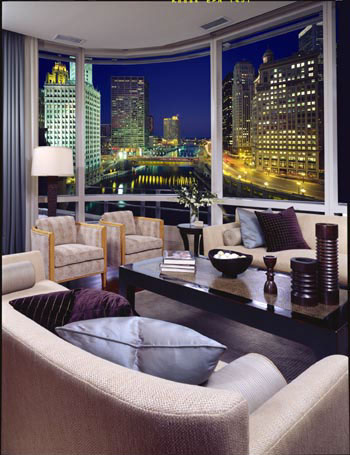 Every decade or so, one or two ultra-luxury buildings – properties at the highest of the high-end, the kind real estate brokers grade A+ and well heeled buyers feel they must have – used to be introduced in downtown Chicago. Today, more than half a dozen new developments with units on the market are making this claim in an unprecedented flurry of high-end housing.
Every decade or so, one or two ultra-luxury buildings – properties at the highest of the high-end, the kind real estate brokers grade A+ and well heeled buyers feel they must have – used to be introduced in downtown Chicago. Today, more than half a dozen new developments with units on the market are making this claim in an unprecedented flurry of high-end housing.
The projects include Trump Tower, where residents will have the finest finishes as well as access to a 60,000-square-foot health club and spa, two ballrooms, maid service, 24-hour room service and a long list of other conveniences. The Palmolive Building, at Walton and Michigan, offers new high-tech units in an art deco masterpiece where a penthouse buyer can enjoy ceiling heights of nearly 18 feet, and several one-of-a-kind terrace condominiums offer up to 4,000 square feet of outdoor space.
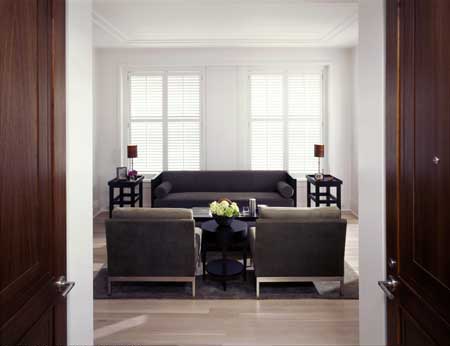 The Elysian, 11 E. Walton, promises the services of a five-star hotel but in an intimate setting where residences have 10- to 12-foot ceilings, fireplaces, two terraces and the best finishes available. Waterview Tower will offer lake and river views from its soaring 85-story profile, a roof garden, a dog run, a 60-foot indoor lap pool and of course, sauna, steam and massage rooms. Buyers at 50 E. Chestnut won’t have to worry about neighbors; the exclusive building has just 34 full-floor units, each with two terraces, floor-to-ceiling windows and 270-degree views.
The Elysian, 11 E. Walton, promises the services of a five-star hotel but in an intimate setting where residences have 10- to 12-foot ceilings, fireplaces, two terraces and the best finishes available. Waterview Tower will offer lake and river views from its soaring 85-story profile, a roof garden, a dog run, a 60-foot indoor lap pool and of course, sauna, steam and massage rooms. Buyers at 50 E. Chestnut won’t have to worry about neighbors; the exclusive building has just 34 full-floor units, each with two terraces, floor-to-ceiling windows and 270-degree views.
The prices? Let’s just say $1 million is not what it used to be. Most of these ultra-luxury homes are priced from $500 to $1,000 per square foot, and a handful of top units can run to $1,500 a foot or more. Some of these tony projects offer smaller units priced under $1 million, but most are north of that mark. LR Development listed its top unit at 840 N. Lake Shore Drive at around $7.5 million – for raw space – while Palmolive just sold a top unit for more than $10 million. Trump Tower has a $16 million penthouse of more than 12,000 square feet.
Welcome to the gilded age in Chicago.
Every one of these developments claims to have the best finishes and features, and at this price point, they are all, in a sense, right. From Internet-based “Smart House” technology to exotic stones and woods to elaborate design flourishes and massive spaces, choosing the “best” is really a matter of taste in this small club. In addition to breaking new barriers in pricing and finishes, developers also are pioneering new product types, locations and architecture as they broaden the point at the top of the housing pyramid.
The number of these homes currently on the market is only a small percentage of the city’s overall new-homes market – closer to 500 than 1,000 unsold units, according to figures gleaned from sales directors. But some experts say that’s too many (a 10-year supply based on one analysis of past absorption rates), and that some projects will be unprofitable, or might never get built. Others, however, say that demographics and a downtown renaissance have created a new demand for these projects. Though Chicago is in uncharted territory, the boosters say, it’s still cheaper than the coasts and not overbuilt at this lofty price point.
New territory
In 1997, LR Development made a foray into brave new prices with the Park Tower, a pencil-thin highrise next to the old Water Tower, at 800 N. Michigan. The condominiums, which sit atop a 19-story Park Hyatt Hotel, were priced at $400 a square foot, with prices for raw space starting at $600,000.
At the time, observers gasped at this price point, some openly wondering if the project could succeed. Not only did it succeed, the highrise helped usher in a new level of ultra-luxury pricing downtown that has continued to grow.
“When brokers talk about this market, they really have raised the threshold to $2 million now because $1 million doesn’t get you much anymore,” says Gail Lissner of Appraisal Research Counselors, a top Chicago appraisal firm.
The boom in pricey downtown development was no surprise to Christopher Carley, of the Fordham Company, who says demographics made it inevitable.
“Years ago, one of my neighbors sold a big house in the suburbs and moved to the city,” says Carley, whose 65 E. Goethe homes sell for $1,000 a square foot on average. “He said, ‘Chris, there’s nothing down there.’ He had to combine units and gut them to get what he wanted.”
Carley anticipated that the massive ranks of baby boomers who had raised families in the suburbs would want to head back to the city once the kids were off to college and the family no longer needed a good school district or a big multi-level suburban house.
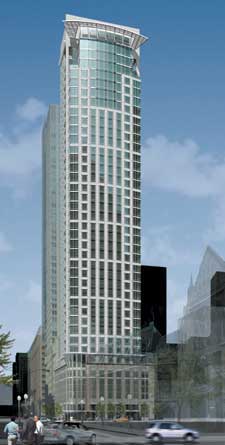 The aging of the baby boomers coincided with a dramatic improvement in Chicago’s cityscape, fueled largely by the economic boom of the ’90s. Mayor Richard Daley spent lavishly on aesthetics – planting trees, building lush flower boxes in street medians and erecting ornate lampposts on key streets. A new Loop theater district was announced and high-profile projects ranging from Millennium Park to Navy Pier to the new Museum Campus continued to pour dollars into downtown Chicago.
The aging of the baby boomers coincided with a dramatic improvement in Chicago’s cityscape, fueled largely by the economic boom of the ’90s. Mayor Richard Daley spent lavishly on aesthetics – planting trees, building lush flower boxes in street medians and erecting ornate lampposts on key streets. A new Loop theater district was announced and high-profile projects ranging from Millennium Park to Navy Pier to the new Museum Campus continued to pour dollars into downtown Chicago.
Though Daley has been criticized for spending too much on the city center at the expense of neighborhoods, that investment helped produce the desired effect. The downtown area grew more than 43 percent, to a population of 90,500 in 2000 from 63,200 in 1990, according to the Chicago Department of Planning and Development.
And the downtown boom has made residential real estate an attractive investment for wealthy buyers still wary of a stock market in flux.
Empty nesters, especially those from the suburbs, have been an important market for high-end city properties whether they’re purchasing units as primary residences or as “in-towns” for occasional use. But several ultra-luxury developments also found a big audience in their immediate neighborhoods, especially in the early days of marketing.
“Until lately, most of our buyers were people living within a five-block radius,” says Katherine Chez, a Coldwell Banker agent selling units at the Palmolive Building. “They felt they could have all new systems and not have to deal with the mess of construction.”
As buildings like the Water Tower, the Carlyle and One Magnificent Mile age, residents have realized they can have higher ceilings, newer systems and fresh finishes in the latest echelon of ultra-luxury homes. Some are simply trading one primary downtown residence for another, newer home. Others, who own multiple homes, are deciding to make their Chicago residence the lavish one. As they buy into these new developments, they’re downsizing homes elsewhere. In both cases, developers are serving what had been something of an untapped market, according to James Kinney, of Rubloff Residential Properties.
“To some extent, it’s keeping up with the Joneses,” Kinney says. “If you go to Florida or Scottsdale or Phoenix or Beverly Hills, a lot of Chicagoans with multiple homes have their cheapest homes here – and not by choice. The highest price here was just cheaper than what you would get in California or Scottsdale or somewhere. People were spending $5 million to $15 million on space there and living in $1.5-million condos in the Water Tower here.”
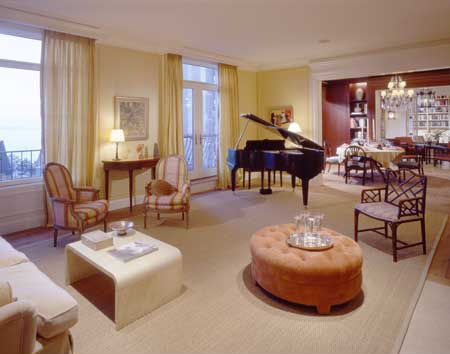 That was before the latest round of ultra-luxury buildings.
That was before the latest round of ultra-luxury buildings.
“We have blown the doors off with how much more opulence is now available here in Chicago, which has created a little bit of a moving-up aspect for the wealthy,” Kinney says. “Before, you could say there just was not a lot available here, so if I’m in an older Lake Shore Drive building, fine. Now that these developments are rippling with finishes, high ceilings, new amenities, people in B+ buildings are saying, with interest rates this low, let’s move up.”
This has meant something of a dip in prices for units at yesterday’s ultra-luxury buildings, according to some experts. For instance, units at the Water Tower that had tracked Park Tower prices and were selling in the range of $600 per square foot have since fallen well below that level. But Kinney says that sellers who are realistic, remembering original prices and new owners’ likely rehab costs, are seeing good returns on their investments.
Suburban buyers
Who are the homeowners purchasing these opulent new properties? Suburbanites moving into the city are a big part of the mix, and many maintain second homes in the area or elsewhere. Developers are catering to this group with a product type common in New York but new to Chicago, the “hotel condominium.” Buyers can purchase hotel condos at Trump Tower or the Elysian, which are luxury hotels as well as condo buildings. These deeded hotel condominiums are owned in fee simple and work like traditional condos except that owners can enter them into the hotel program and have the units generate revenue when they’re not in use (see separate story in this section).
So far, only two buyers at the Palmolive Building do not have additional homes somewhere else, according to Chez. Transplants to Chicago account for more units, and other buyers include some of the city’s best-known families. At 65 E. Goethe, where the top unit is valued at $15 million, the names Wrigley and Crown reportedly are on the short list of 18 buyers.
Charles Huzenis, of Jameson Development, says that at 50 E. Chestnut he’d anticipated some homes going to urban professional couples with two high incomes who could swing the starting price of $2.1 million – two law partners who each earn around $250,000 a year, for example. Most buyers so far, however, either own their own companies or are CEOs, and most are from the suburbs.
“What’s interesting is that almost all of the buyers, even the (potential) ones we’re talking to now, own big homes in the suburbs of 7,000 or 8,000 square feet,” Huzenis says. “They’re selling those to move into the city.”
Huzenis says that although his buyers are downsizing even with spacious condos of 3,550 to 3,905 square feet, they like having all of that space on a single level, a private elevator lobby and no neighbors on either side.
Pioneering luxury designs
What do the latest ultra-luxury developments luring buyers from premium downtown buildings as well as the suburbs look like?
For a while there, you only had to call Parisian-born architect Lucien Lagrange, of Lucien Lagrange & Associates, for an answer to that question. Lagrange seemed to have cornered the market on ultra-luxury design in Chicago. He designed the Park Tower for LR Development in the ’90s and the Fordham Company’s Fordham and Pinnacle highrises, as well as the ultra-luxury 65 E. Goethe.
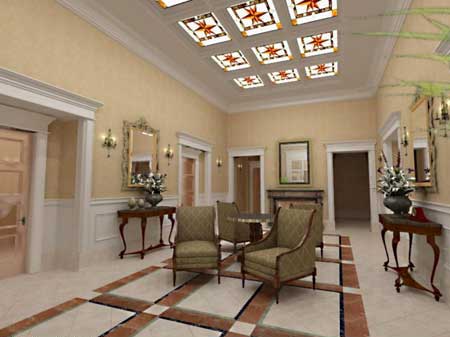 Lagrange is the architect for the Ambassador, the 38-unit high-end conversion of the former hotel at 1300 N. State, and was renovation architect for the Blackstone Hotel conversion before that deal fell apart a couple of years ago. He designed the Elysian and LR Development’s 840 N. Lake Shore Drive. His calling card is the metal mansard roof, along with turrets, bay windows, arched doorways and elegant balconies. If the goal is to recreate the grandeur of vintage European architecture, few can do it better than Lagrange.
Lagrange is the architect for the Ambassador, the 38-unit high-end conversion of the former hotel at 1300 N. State, and was renovation architect for the Blackstone Hotel conversion before that deal fell apart a couple of years ago. He designed the Elysian and LR Development’s 840 N. Lake Shore Drive. His calling card is the metal mansard roof, along with turrets, bay windows, arched doorways and elegant balconies. If the goal is to recreate the grandeur of vintage European architecture, few can do it better than Lagrange.
At 65 E. Goethe, he did such a good job blending the building in with the surrounding architecture, even native Chicagoans who have been away for a few years might walk by thinking it’s always been there.
“I’ve pulled up in front of the building and people ask me, how long did this rehab take?” Carley says. “People want all of the warmth and graciousness and size of the old vintage brownstone apartments but with all of the conveniences and creature comforts – high-speed Internet, radiant floor heating, media rooms with 20 different conduits lined up…”
The zinc-clad mansard roof and limestone exterior set the tone at 65 E. Goethe, and for the Elysian, Lagrange created a European-style courtyard that conjures images of carriages rather than cars. At 840 N. Lake Shore Drive, the dramatic turret already has become something of a landmark for passing motorists, while its curving windows create brilliant spaces for residents overlooking the lake.
It’s not at all certain that Mies van der Rohe, whose famous 860-880 N. Lake Shore buildings sit on the same block as 840 N. Lake Shore Drive, would approve of such retro design, but the old modernist might be intrigued by some of the latest ultra-luxury buildings.
The conventional wisdom in Chicago has long been that a vintage look is what most buyers at the highest price points want, and strong sales at the Elysian and other projects prove there’s some truth in this. But developments with contemporary designs – Trump Tower, Waterview Tower, 50 E. Chestnut and 30 W. Oak – also are proving popular with well-off buyers.
“This is a really unique building for Chicago, which is one reason people like it so much,” says Letitia Windham, an At Properties sales agent selling Smithfield Properties’ 30 W. Oak highrise, designed by Booth Hansen Associates. “It’s very Mies in style, with steel and a glass curtain wall. Every home has three exposures: all have a south and all have a north view, and then you choose an east or west exposure.”
The building’s beveled face not only maximizes views and creates visual interest inside units, it exposes the framework of the building in true Chicago style and promises to make a powerful statement from the street. Teng Associates’ Waterview Tower offers buyers a highrise that’s also heavy on glass and steel, though its granite-clad profile gives the slender 85-story giant a decidedly vertical emphasis, unlike 30 W. Oak, where the orientation is horizontal.
Skidmore Owings & Merrill’s revised design for Trump Tower will not make it the tallest building in the world, but at 90 stories it will be one of the tallest in the city. The building’s height is softened by a segmented design that creates a series of setbacks, each with a rounded corner. It’s an idea that echoes another SOM project, the Sears Tower, though Adrian Smith’s glass and stainless steel design for Trump is much more graceful and visually interesting than that earlier Chicago icon.
New locations
Trump Tower is breaking new ground in another respect too. The kinds of premium prices Trump is charging once were seldom seen outside of tony neighborhoods like the Gold Coast. The tower’s riverfront location on the former site of the Sun-Times building, at 401 N. Wabash, would have been a more likely home for office space a decade ago.
Today, however, the boom in downtown residential development has sent builders and buyers into new locations. River North has seen a wave of new condo and apartment towers. The location on the edge of River North’s galleries and restaurants and a bridge away from Loop offices has attracted buyers. Trump’s cachet and scale and neighbors like the graceful Wrigley Building probably don’t hurt, and neither does the resurrection of the Chicago River as an amenity that allows for sweeping, protected views and cultural activities.
Waterview Tower, at 111 W. Wacker, is close to Trump but across the river, on the side more associated with offices than homes even today. But buyers are drawn to the convenience and views of this site, according to Dorrie Freiman, sales director for the development.
“The building slants to the southeast so you have views of both the lake and the river,” Freiman says. “I live four blocks from here and I love it. You can walk to work, Michigan Avenue, Millennium Park. You truly are in the center of the city. The theater district and Marshall Field’s and Block 37 are a couple of blocks away. I have people from Michigan Avenue moving here because it’s getting so dense over there.”
Other projects have moved into the business district and met with success, including the Heritage at Millennium Park and the massive Lake Shore East planned development. Rezmar Development Group is building 17 ultra-luxury rowhomes at its Mansions on Prairie project, 1815 S. Prairie, and at press time, only the model home remained for sale. Because land is more affordable in the South Loop than in the Gold Coast or Streeterville, the developer is able to offer the same sorts of finishes and amenities as projects to the north, but at a much lower price: $2.5 million for a 5,885-square-foot rowhome, or about $425 a square foot.
Market times for properties in this price range are always longer than for more affordable product, but several ultra-luxury developments are taking literally years longer than expected to sell out. Builders at this price point frequently ask, are there 15 or 20 or 100 buyers in the Chicago area who want and can afford this type of premium city home? The answer undoubtedly is yes. The problem arises when too many builders start asking the same question.
In 2002, 63 homes or condos priced at $2 million or more closed in the city, and in 2004, 79 homes had closed in that price range as of mid-October, according to the Chicago Association of Realtors. But at press time, nearly 300 homes were on the market priced at $2 million or more. The number of units sold does not take into account homes under contract at developments that have not yet been built, but the supply does seem to be a little swollen, according to some in the industry.
But a number of projects that have been on the market for some time are reporting new momentum. At press time, 65 E. Goethe had only four units remaining, and LR Development was around 75 percent sold at 840 N. Lake Shore. The Palmolive Building was “well over 60 percent” sold, according to Katherine Chez, and in early October sold an 18th floor unit of around 9,600 square feet listed around $10 million.
Several new projects also reported strong sales. Trump Tower, notably, was 76 percent sold, and the Elysian had sold 86 of the 100 hotel condominiums it was offering, as well as 31 of 51 homes. Both projects are expecting occupancy in 2007.
But no matter how the current projects sell, they clearly have set a new standard for luxury – and pricing – in Chicago.
“Why are people paying $1.3 million for a one-bedroom in Trump Tower?” asks sales director Tere Proctor. “Because they want to be in the best building with all of the best services and amenities the market allows.”
